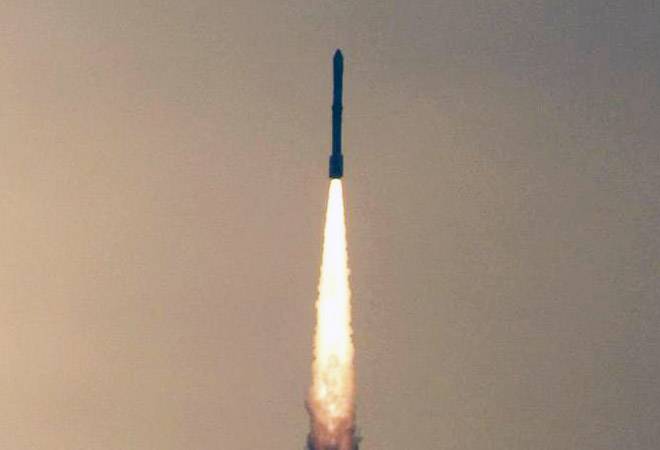ISRO successfully launches earth observation satellite HysIS

ISRO’s workhorse rocket PSLV-C43 on Thursday, successfully injected into orbit with India’s earth observation satellite HysIS along with 30 co-passenger satellites from eight countries.
The rocket lifted off majestically into cloudy skies in a burst of orange flames at 9.57 am from the first launch pad at this spaceport at the end of a 28-hour countdown.
The HysIS was placed into orbit 17 minutes and 27 seconds after lift-off.
ISRO chief K Sivan and the space agency’s scientists broke into cheers as the earth observation satellite was injected into sun-synchronous polar orbit.
During the launch however, scientists had to restart the fourth stage engine twice for placing the 30 co-passenger satellites. According to an official, the fourth stage engine was cut off after the earth observation satellite was separated at an altitude of 636.3 km.
Scientists also had to reduce the altitude from 636 km to around 504 km to place the 30 satellites in the sun-synchronous polar orbit one by one.
The mission was one of the longest mission for ISRO.
The primary mission of the Hyper Spectral Imaging Satellite (HysIS), whose life is five years, is to study the earth’s surface in visible, near infrared and shortwave infrared regions of the electromagnetic spectrum.
It is the primary satellite of the PSLV-C43 mission, which is on its 45th flight.
The mass of the spacecraft is about 380 kg, and the satellite would be placed in 636 km-polar sun synchronous orbit with an inclination of 97.957 degrees, ISRO said.
The co-passenger satellites have been contracted for launch through ISRO’s commercial arm Antrix Corporation Limited.
PSLV-C43, is the ‘Core Alone’ version of PSLV. It is the lightest version of the launch vehicle.
This is ISRO’s second launch in the month.
The space agency had launched its communication satellite GSAT-29 on board GSLV MkIII-D2 on November 14.